


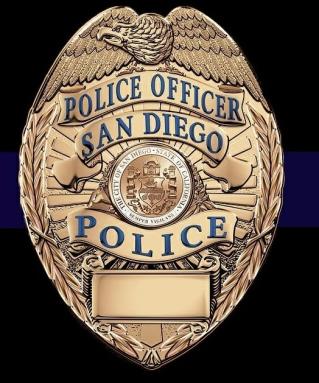
In July 1937, the federal Works Project Administration constructed Fire Station 13 at 7877 Herschel Street to replace an older facility. The new, 6000 square foot facility housed the fire department personnel on the second floor and the SDPD on the first. The Herschel Street facility served the SDPD as the La Jolla substation until 1968.
With the city growing in all directions, the La Jolla Police Substation closed to make way for a much larger jurisdictional command now known as Northern Division. That station opened in 1971. Today, the command serves 225,234 people and encompasses 41.3 square miles.
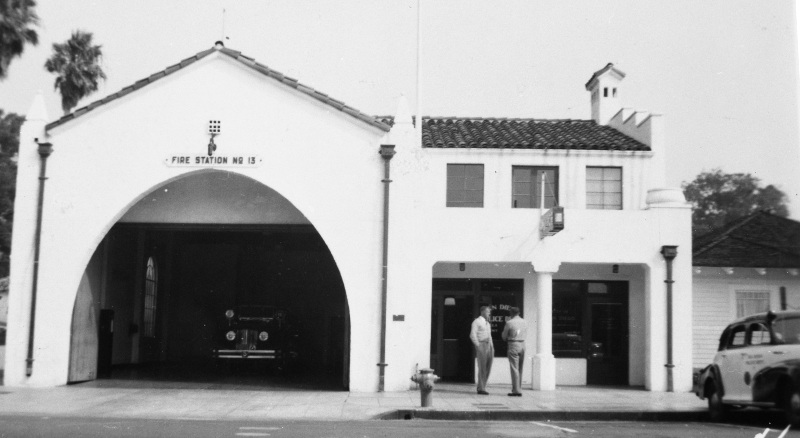


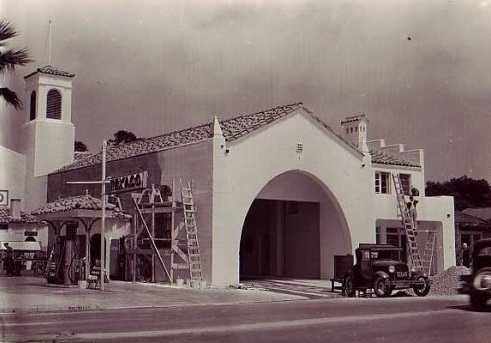

Policewoman Lucy Jeardeau was assigned law enforcement duties in La Jolla in 1917 however it's not known where she started and ended her shift
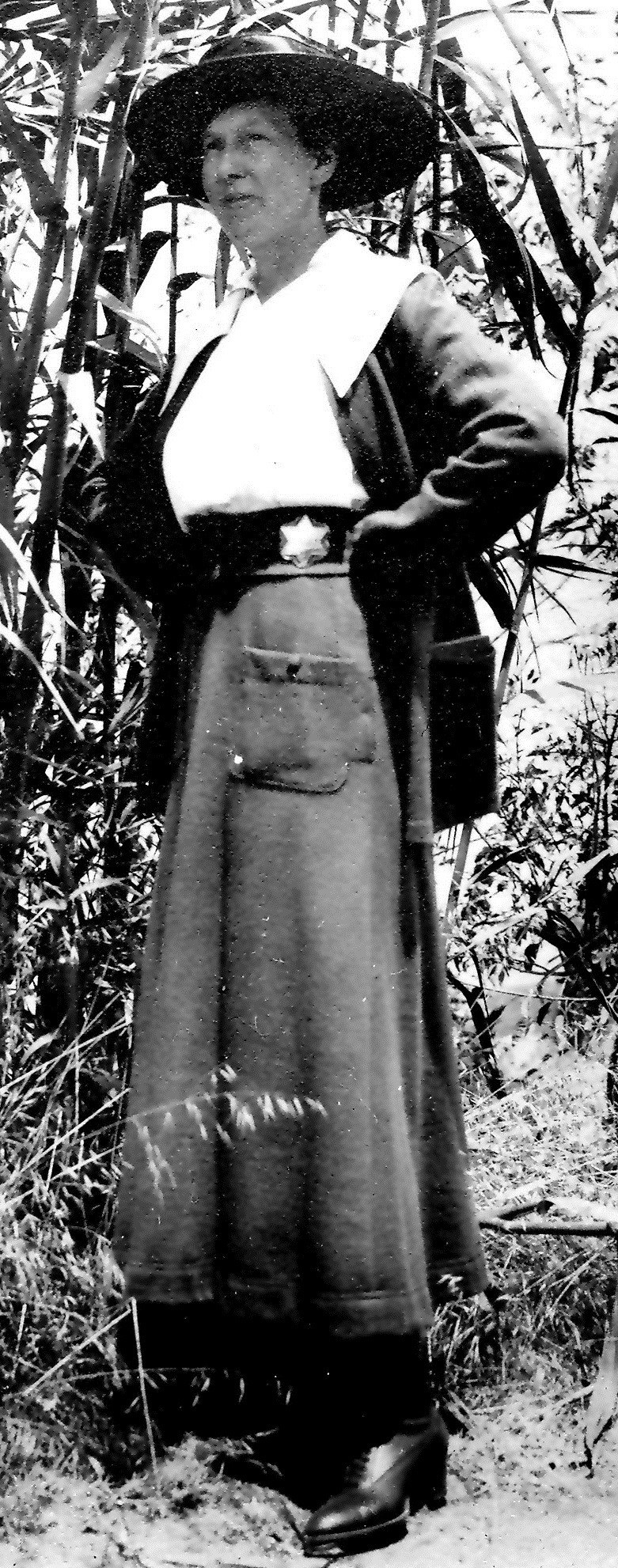
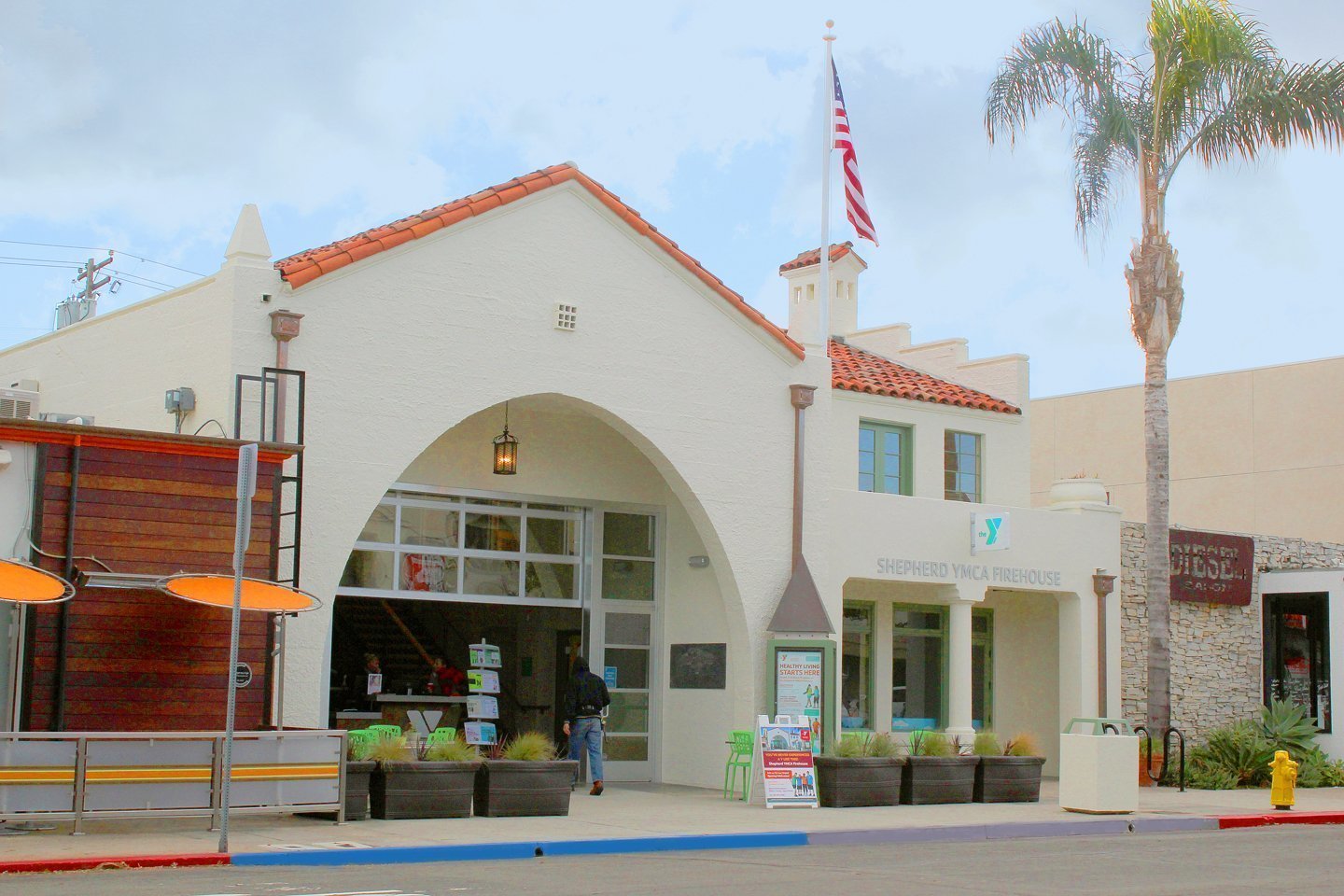

La Jolla YMCA opens Shepherd YMCA Firehouse in Village
Patrons and would-be patrons of the La Jolla YMCA who live or work near the Village are no longer limited to trekking up the oft-congested lanes of Torrey Pines Road to log their fitness hours, now that the Shepherd YMCA Firehouse location on Herschel Avenue has opened.
Although technically open for business since Dec. 1, the opening of the re-purposed historic firehouse-turned-fitness facility was celebrated last week with a grand opening and ribbon-cutting ceremony.
Already noting a welcoming enthusiasm among locals, YMCA management expects the new location not to replace the offerings of the larger La Jolla facility further north on Cliffridge Avenue, but rather to complement it, and to perhaps help serve a group that might not otherwise have considered the Y.
Sue Ball, regional vice president of YMCA of San Diego County, said feedback has been pouring in on the convenience of the new facility, which is technically a satellite branch of the Cliffridge Avenue site. That the new location is within walking distance for people who spend much of their time in the Village has been a main point of excitement, Ball said.
“Also, it just has a different feel,” she added. “If you like that feel, working out in a smaller, more intimate space, some people will choose that.”
Part of the experience is the space’s urban appeal. From the interior’s exposed trusses and use of metallic finishes to the large firehouse door on rollers — kept open during hours of operation — the modern interior in contrast to the historical building’s façade can’t go unnoticed.
Designed by architect Trip Bennett III, known for his architectural work in adaptive re-use of historic structures, the $1.5 million renovation of the space included considerable restoration of the historic firehouse’s exterior. But it also included significant changes to its interior that made plans for the space achievable. Most noteworthy, perhaps, was the opening of the interior spaces through the addition of a mezzanine, the removal of several walls, a move of the building’s staircase and changes to the roof structure — allowing for the continuation of a seismically safe structure, despite a removal of the diaphragm ceiling that had previously hidden the trusses that are now visible.
“We had to add a lot of support,” Ball said. “Lots of things had to be done, engineering-wise, to keep the building substantial.”
Now, in place of what had been three small rooms on the upper level, a full-sized studio exists, where something such as a ballet class could be held.
“And by moving the staircase, we were able to make one of the studios upstairs larger,” Ball said.
An old kitchen that had never been used by the YMCA, Ball added, was completely demolished to allow for a third studio.
While La Jolla YMCA has held a lease on the historic building for more than three decades, the facility had previously only been used as a program center, and wasn’t always in use or open. The decision was made just over a year ago to completely renovate the property so it could become a true “family fitness center,” Ball said.
Offering strength and cardio equipment, the facility’s “family fitness” atmosphere is highlighted by its child watch area.
Children over the age of 7 are allowed to work out with their parents. But parents of younger children are assured of a place to keep their children nearby, with staff present to supervise them, while they exercise.
Still taking shape with the additions of new equipment and fitness aids, the new facility’s studios are expected to be in full use come early 2016, said Sarah Iantosca, YMCA regional marketing and communications director. That’s when the facility plans to begin offering its full slate of fitness and youth classes, which could include disciplines such as dance, gymnastics and Taekwondo.
“We’ll also specialize in what we call ‘premium classes,’ which are small,” Ball said. Those might include small-group personal training classes for TRX, boot camp or yoga.
Member benefit classes, such as Zumba dance, yoga and various aerobic dance classes, are planned to be held in one of the facility’s larger studios.
“Those are classes that would be pretty traditional at other Ys,” Ball said. “The small group classes are a little bit different in this facility. From our market research, we’ve learned that people want a smaller, more personalized attention.”
Ball said La Jolla YMCA hopes to see at least 100 new YMCA members registered at the facility by the beginning of the new year. So far, she said, the facility has already signed up about 75.
Iantosca said existing La Jolla YMCA members are welcomed at the facility, as their memberships are valid at both La Jolla locations. Come January 2016, she added, the network of locations open to YMCA members will expand, as locations across San Diego County will recognize each other’s memberships.
But that’s not all YMCA members can expect at the new facility come January, Ball said, noting the kickoff of what she thinks will set the Shepherd YMCA Firehouse location apart from other local Ys, including the Cliffridge Avenue location. Beginning with two Saturdays in January, and continuing on every Saturday starting in February, the facility will host on Saturday evenings a “Parents’ Night Out” after the 4 p.m. close of the facility’s fitness areas.
The plan is to allow parents to bring their children in from 6-10 p.m., while they enjoy an evening to themselves, perhaps going out to see a movie or to sit down somewhere for dinner.
“The children will have dinner with us, and we’ll have a different theme (each time),” Ball said. “We do that at Cliffridge, but we just do it once a month. And we think there’s more nightlife down in the Village, and that adults might want that more often in the Village.”
Open to children as young as toddlers and as old as teenagers, the “Parents’ Night Out” is but another way Ball sees the new Y becoming as much a community asset as it is one supporting individual fitness.
“We envision it as a meeting place for people,” Ball said. “We don’t serve food there, but we have tables and chairs that people can sit at and have a cup of coffee, or just rest after a class or visit with their friends after a class.”
Shepherd YMCA Firehouse, 7877 Herschel Ave., La Jolla. Hours: 6 a.m. to 9 p.m. Monday to Friday, 8 a.m. to 4 p.m. Saturday and Sunday. (858) 551-9622. lajolla.ymca.org
Copyright © 2018, La Jolla Light
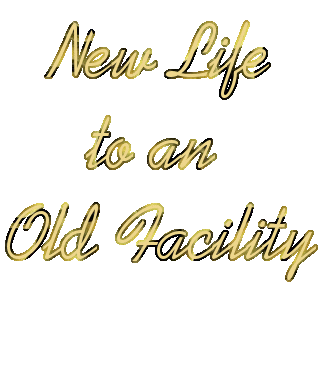
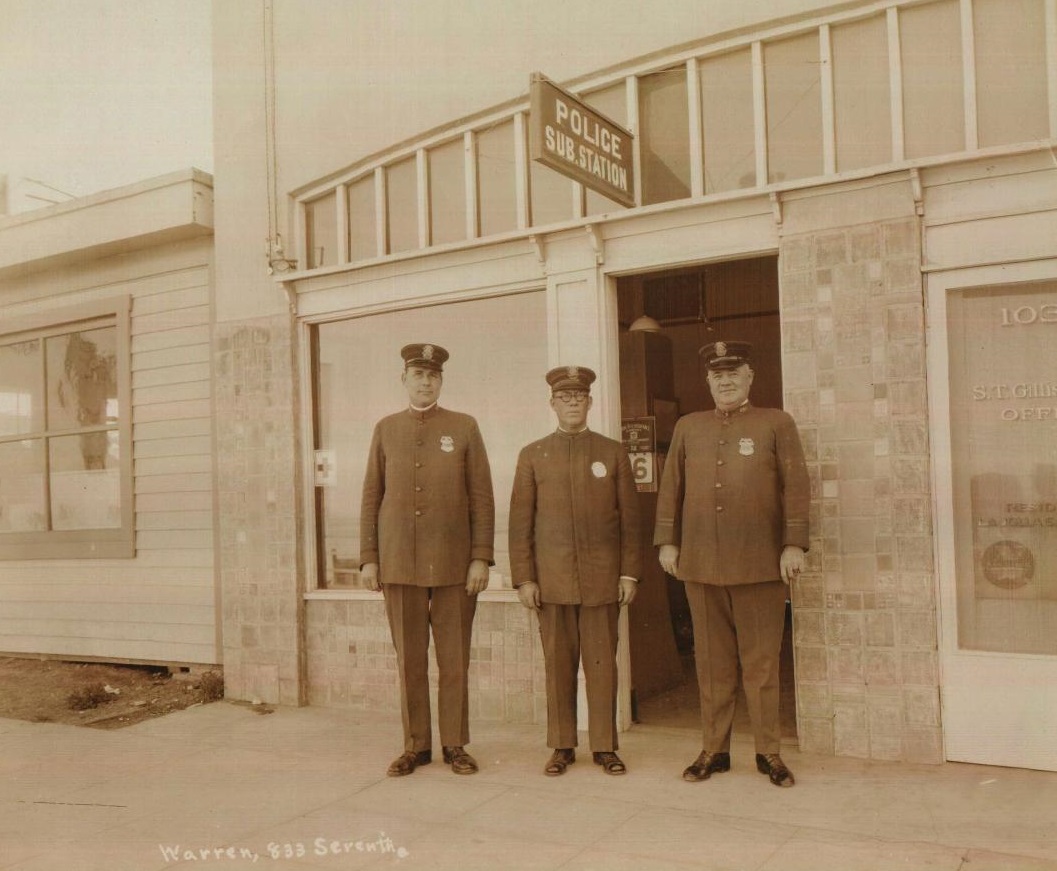

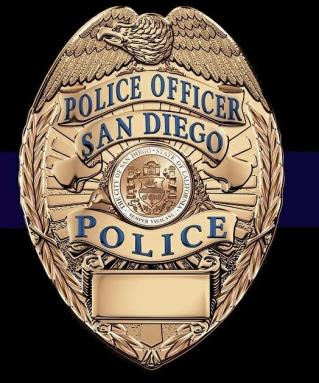

The earliest records of a San Diego Police Department presence in La Jolla dates back to around 1910. Calls for service were seldom back then so when officers were needed they rode by horseback from the downtown station at 700 2nd Avenue.
As La Jolla continued to grow, and a regular police presence was required, an officer would ride from downtown and use the bus ticket office as an impromptu substation as needed. For occasions when the officer was needed and not in the bus ticket office, the SDPD telephone operator would call various businesses in the community until the officer was located.
In 1921 SDPD officially established the first official La Jolla Substation at 1002 Prospect Street, next door to the Risdon Transfer Company. Sergeant George W. Churchman was placed in charge. The new substation quickly proved inadequate and a newer location, at 1035 Prospect Street, was soon opened up. Two officers staffed this substation until 1927 when an additional five officers were added.
The 1927 roster consisted of Officer’s George Agnew, Yancy Adams, George Irwin, Albert P. Moore, Francis O. Baker and Earl W. Martin. Lieutenant Henry W. Churchman served as the commanding officer. SDPD remained at 1035 Prospect for a decade until moving into the newly constructed police/fire facility at 7877 Herschel in 1937.
While the La Jolla Substation remained isolated until urban sprawl connected it with the rest of the city, it still served a valuable function providing officers for roadblocks when major crimes occurred. As officers controlled who left the city on Highway 1, other officers combed the urban core. Having a quick response from La Jolla to lock down the northern route out of town was one factor that helped keep San Diego’s crime rate low.
Sergeant Arthur K. Krause, Officer's Robert B. Crosby, Eugene M. Arthur, Louis A. Schnepp, Wilfred L. Tyler, Harry J. Mote, Edmund O. McFadden, J.A. Phillips, Wilbur E. Gore, Jack Frazier, Charles T. Mann, William J. Shewbert, Carrol Pease, F.V. Dickson, Harold W. Holmerud, and Gale E. Dunbar

